Content [Hide]
- Where is Tho Ha ancient village?
- POTTERY
- KILLER WORKS
- THROU HA – PURE VIETNAM ANNUAL ARCHITECTURE PANTS
WHERE IS THROU HA VILLAGE ?
Originally, it used to go up in parallel with the reputation of the village having the traditional profession of making rice paper rolls, rice noodles, and pottery. Tho Ha village is hidden behind the sound of traffic and lively streets. Located in Van Ha commune, Viet Yen district, Bac Giang province. Considered as the land of “the genius of the people”, famous in the whole country for its pottery making and the pure Vietnamese ancient architectural complex bearing the imprint of the traditional culture of the Northern Midlands Delta.
About 48km from Hanoi, Tho Ha ancient village in Van Ha commune, Viet Yen district, Bac Giang province, is considered a land of “geographical genius,” famous nationwide for its pottery village and ancient architectural complex. Pure Vietnamese bearing the imprint of the inhabitants of the Northern Midlands Delta.
Tho Ha is a familiar and interesting place for domestic and foreign tourists, those who study architecture and fine arts, and artists and artisans for inspiration.
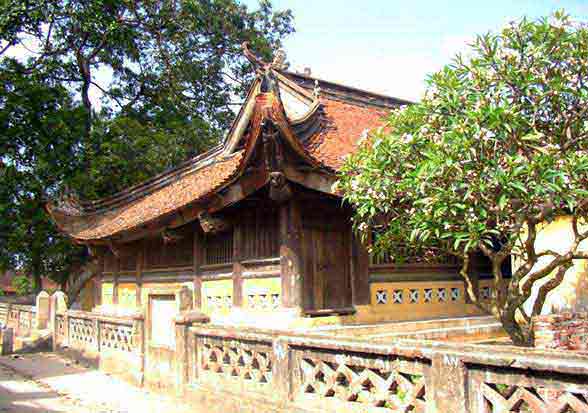
The tour program of tourists can be: sightseeing on the wharf under the boat of the Cau River, visiting communal houses, pagodas, village gates, literature, seeing ancient banyan trees, visiting some old houses in the village, see the beautiful old village alleys, visit the pottery factory, visit the households that produce rice paper rolls and rice noodles by machine and by hand, visit the households that make rice wine.
When returning, visitors should buy a few hundred rice paper rolls, a few pounds of rice noodles, and a few liters of glutinous rice wine as gifts. If visitors like strong emotions, please visit Tho Ha when the water level of Cau River is at an alarming level of 3. When visitors visit Tho Ha, they can simultaneously visit two more famous KDLs of Kinh Bac land, namely: Bo Da Pagoda and Ba Chua Kho Temple. These locations are only 3 to 5 km apart.
The way to the village: from Hanoi, follow National Highway 1 to the North 31 km to Bac Ninh city, turn left, go 3 km to Dang street, reverse along Cau river dike 1 km to Tho Ha wharf. village.
POTTERY
Tho Ha pottery craft dates back to the 12th century and is one of the three oldest ceramic centers of the Vietnamese people, next to Phu Lang and Bat Trang. According to the village genealogy and archaeological samples found, Tho Ha is one of the cradles of ceramics. Tho Ha was a busy pottery trading port of Kinh Bac region. The flourishing of the pottery profession has helped people build a complex of architecture of communal houses, pagodas, literature, village gates, and grand palaces.
In the village, there is a story that the ancestor of Tho Ha pottery village is Dr. Dao Tri Tien. At the end of the Ly Dynasty (1009 – 1225), three Mr. Dao Tri Tien, Hua Vinh Cao and Luu Phong Tu worked together as mandarins in the court and were sent to the Northern Song Dynasty (960 – 1127). After completing the mission, on the way back home to Shaozhou, Guangdong province encountered a storm, had to rest. There is a famous pottery kiln here, his father visited and learned the technique of making pottery.
Returning to the country, Dao Tri Tien taught the profession of making crimson ceramics to Tho Ha, Hua Vinh Cao taught the profession of making white ceramic products to Bat Trang, Luu Phong Tu passed on the profession of making dark yellow ceramics to Phu Lang. Previously, the ceremony of offering incense to the pottery ancestors (honoring all three of them) was annually held by potters in Tho Ha at the household.
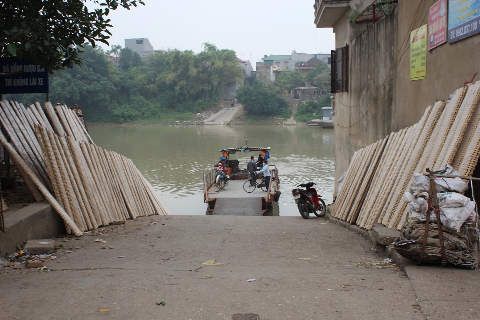
KILLER WORKS
From rice flour in addition to this product is rice paper rolls, people also produce rice noodles and large rice paper sprinkled with sesame. Tho Ha rice noodles bundled into 1 kg large bundles are also very famous, the noodles are chewy without being crushed, the profession of making rice noodles precedes the current production of rice paper rolls. Tho Ha sesame rice paper is even more delicious than Ke rice paper. Each household making rice paper rolls and noodles usually raises about a dozen pigs, each weighing more than one quintal to sell, which is a huge source of income.
Thanks to the profession of making rice paper rolls, the villagers have a brighter life than before, most of the households have motorbikes, refrigerators, televisions, washing machines, living life is not much different from the city. Banh mi nem must be fanned to make the cake by manual method, but since the electricity is available, with the new high-yield production line technique, human effort has been reduced, productivity has increased. three to four times.
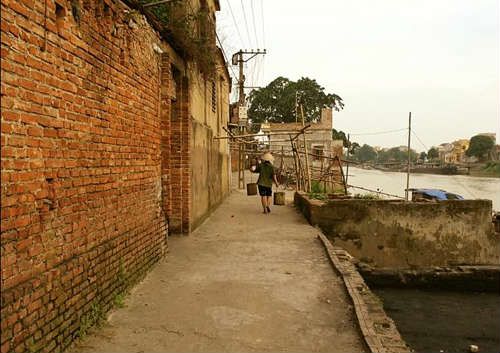
A household can make 250 kg of rice noodles a day. On the occasion of Tet, Tho Ha’s rice paper rolls are not enough to meet the needs of the market. The time when the cake attracts the most visitors starts from September until the end of February next year. Tho Ha rice paper rolls have a cool, fragrant taste, white color that is both fragrant and tough, so it is not only reputable with domestic customers but many agent owners have come to sign contracts to export to Taiwan countries. , Korea, Japan and are very popular with these markets.
However, the households producing rice paper rolls are still at a small scale, without a brand, and Tho Ha rice paper rolls have not been able to enter supermarkets in big cities. In addition to making rice paper rolls, now a Some households are still doing wine making, but the production of glutinous rice wine is delicious and sold at a high price.
THROU HA – PURE VIETNAM ANNUAL ARCHITECTURE PANTS
Tho Ha is also famous for its ancient architectures from houses to village gates, the ancient wells are made of baked bricks and unglazed earthenware. Notably, this place also has an ancient pagoda and a superficial communal house – a masterpiece of traditional Vietnamese architecture.
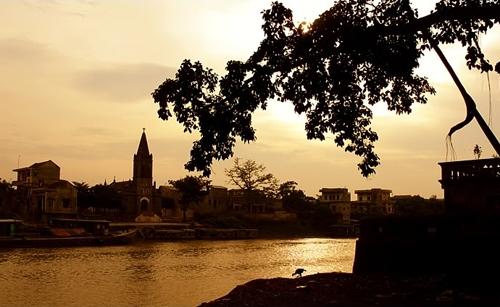
The gate is located at the beginning of the village in front of the communal house, on the left is a large lake, on the right is a hundred-year-old banyan tree imbued with the traditional culture of the residents of the Northern Midlands Delta. In addition, in the village, there are still some old houses built more than 100 years ago, typical for the old houses in the Northern midland plain.
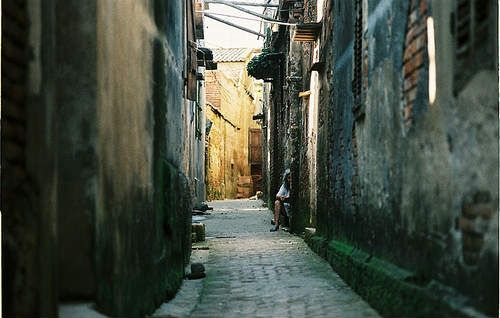
Tho Ha communal house is a famous communal house of Kinh Bac country, is the flower of Vietnamese carving art and is ranked as a national architectural and artistic relic. The communal house was built in 1692, during the reign of King Le Hy Tong and is a large-scale architectural work with unique sculptural art once ranked by the Museum of the Far East of Uncle Co. The temple worships the village’s god, Lao Tu, and the patriarch Dao Tri Tien.
This is the second oldest communal house in Bac Giang (after Lo Hanh communal house built in 1576). Tho Ha communal house represents the spiritual space, traditional culture of the Vietnamese people with typical architecture, carved plaques expressing the theme of “four spirits, four quarters”, stylized flowers, birds and animals. People. Currently, the communal house still preserves nine ancient steles containing many values of traditional culture and history.
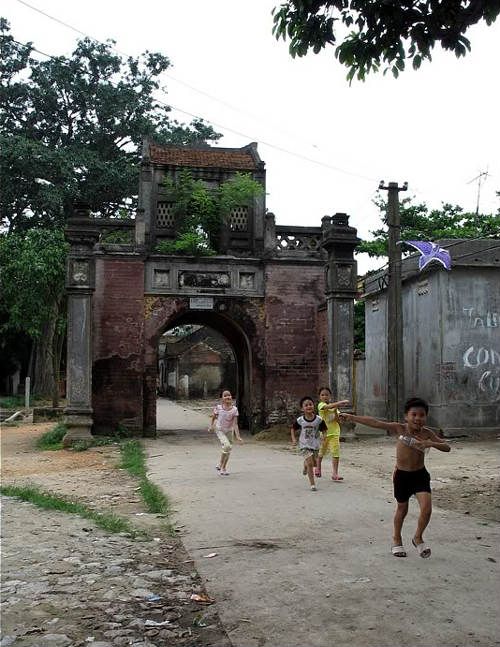
Tho Ha Pagoda named “Doan Minh Tu” is a national historical and cultural relic. The pagoda was built in the style of domestic and foreign affairs, on a large scale, including the three-way gate, the steeple and the front hall. Tam Quan pagoda is located next to the communal house. The steeple and the forecourt are splendidly carved with the themes of dragons, clouds, flowers…
In the temple, there is a large statue of Tathagata Buddha and a statue of Quan Am sitting on a lotus. From Tam Bao building, follow two corridors to Tien Cave, a rare architectural work. The fairy cave has fully recorded the image of Shakyamuni from the time he was born, when he was an adult, and when he left the capital to practice in the cave to attain enlightenment. Next, go through the large yard to the Ancestral house, where the temple worships Master and the monks who were abbots at the temple.
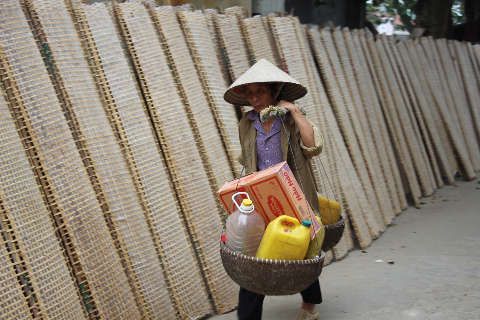
The document of Tho Ha village was built in the 17th century, worshiping Confucius, Tu Phoi and 72 sages… This place is considered the cradle of Tho Ha education. This is also a place that attracts a lot of visitors to visit, especially during the exam season, the students come here to burn incense and worship with a sincere heart hoping to pass the exam. The document of Tho Ha village was recognized as a traditional cultural and historical relic on February 28, 1999.
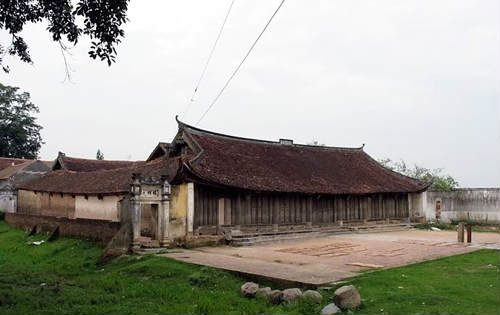
The ancient beauty, pure Vietnamese, the kindness and hospitality of the people and the advantage of being not far from the center of the capital, Tho Ha ancient village has been creating great interest for domestic and foreign visitors. country, with architects and aestheticians, artists and artisans coming to visit and find inspiration.